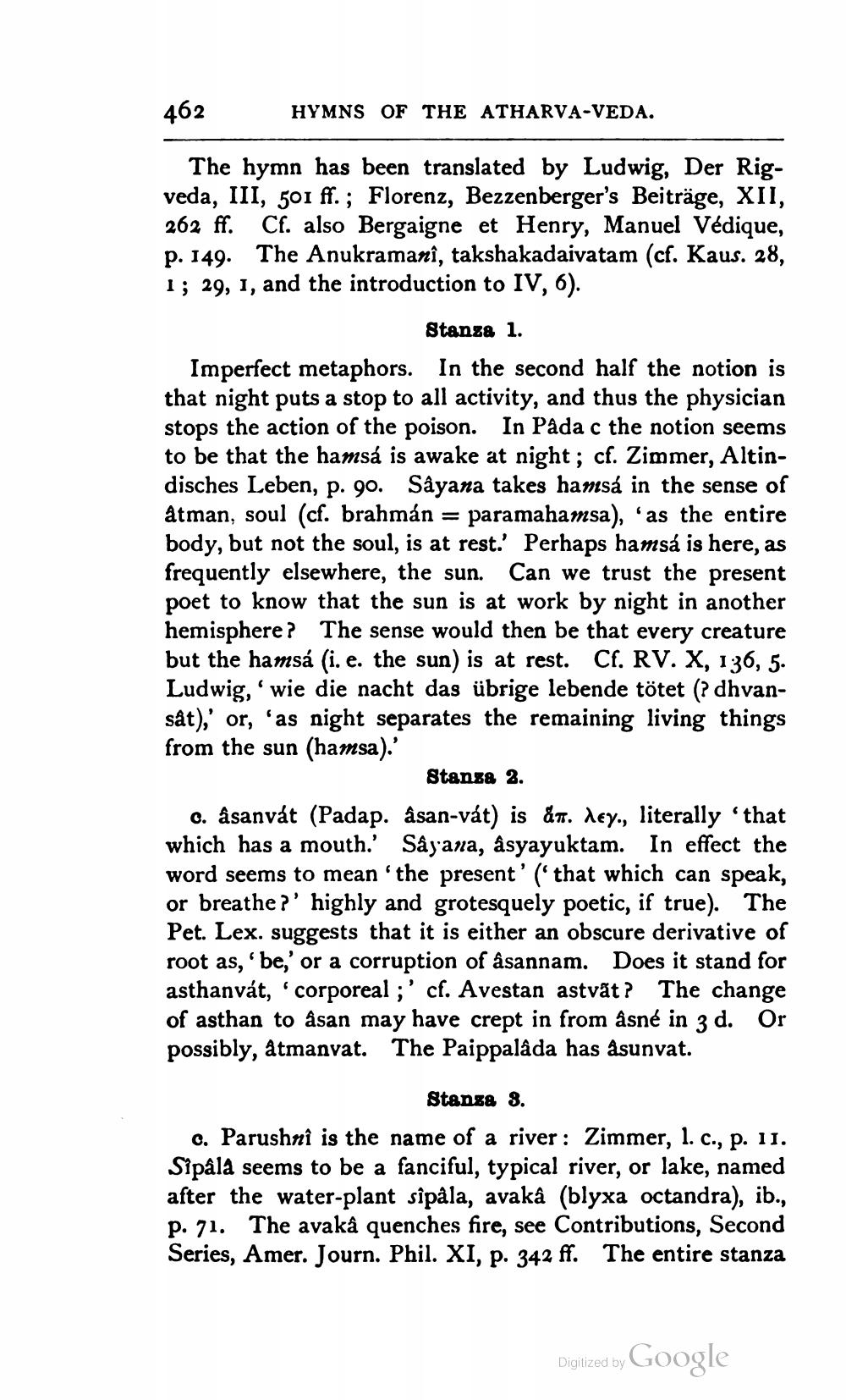________________
462
The hymn has been translated by Ludwig, Der Rigveda, III, 501 ff.; Florenz, Bezzenberger's Beiträge, XII, 262 ff. Cf. also Bergaigne et Henry, Manuel Védique, p. 149. The Anukramanî, takshakadaivatam (cf. Kaus. 28, 1; 29, 1, and the introduction to IV, 6).
HYMNS OF THE ATHARVA-VEDA.
Stanza 1.
Imperfect metaphors. In the second half the notion is that night puts a stop to all activity, and thus the physician stops the action of the poison. In Pâda c the notion seems to be that the hamsá is awake at night; cf. Zimmer, Altindisches Leben, p. 90. Sâyana takes hamsá in the sense of âtman, soul (cf. brahmán = paramahamsa), 'as the entire body, but not the soul, is at rest.' Perhaps hamsá is here, as frequently elsewhere, the sun. Can we trust the present poet to know that the sun is at work by night in another hemisphere? The sense would then be that every creature but the hamsá (i. e. the sun) is at rest. Cf. RV. X, 136, 5. Ludwig,' wie die nacht das übrige lebende tötet (? dhvansât),' or, 'as night separates the remaining living things from the sun (hamsa).'
Stanza 2.
c. âsanvát (Padap. âsan-vát) is aπ. λeу., literally 'that which has a mouth.' Sâyana, âsyayuktam. In effect the word seems to mean 'the present' ('that which can speak, or breathe?' highly and grotesquely poetic, if true). The Pet. Lex. suggests that it is either an obscure derivative of root as, 'be,' or a corruption of âsannam. Does it stand for asthanvát, corporeal;' cf. Avestan astvät? The change of asthan to âsan may have crept in from âsné in 3 d. Or possibly, åtmanvat. The Paippalâda has âsunvat.
Stanza 3.
c. Parushni is the name of a river: Zimmer, 1. c., p. 11. Sipâlâ seems to be a fanciful, typical river, or lake, named after the water-plant sîpâla, avakâ (blyxa octandra), ib., p. 71. The avakâ quenches fire, see Contributions, Second Series, Amer. Journ. Phil. XI, p. 342 ff. The entire stanza
Digitized by
Google




